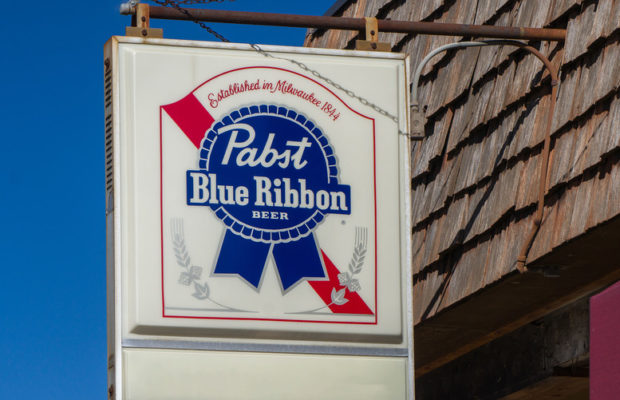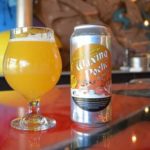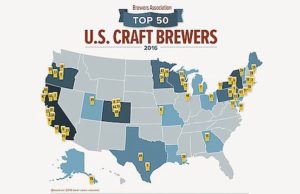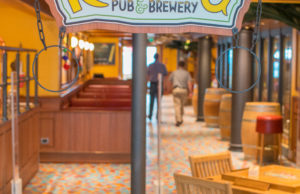Opinion: How craft beer lost its craft and gained layoffs

The definition of craft beer is as amorphous as it ever was. And that helps no one but the beer industry’s largest brewers.
After we ran an interview with Pabst Brewing Co. owner Eugene Kashper, I began thinking about the Brewers Association’s definition of a craft brewer as it applies to Pabst. There are many reasons to consider Pabst outside the “craft” beer realm: Its Schlitz brand was once bigger than Anheuser-Busch InBev SA BUD, -0.73% its portfolio is heavy with light lager, it now partners with multiple international brands including Mexico’s Minerva and China’s Tsingtao, and it has a strong business in decidedly non-craft flavored malt beverages (FMB) such as Not Your Father’s Root Beer.
But various changes to the BA’s definition have not only made Pabst’s status an arguable point, but they’ve also diluted the essence of the term “craft beer.” The definition has three pillars: “small,” “independent” and “traditional.” While Pabst would never have fit under the Brewers Association’s original limit for “small” — 2 million barrels of annual production — the 5.5 million barrels it produced in 2015 fell below the 6-million-barrel mark the BA set when it changed its barrel production limit in 2010 to accommodate the growth of Boston Beer Co. SAM, -1.26% and its Samuel Adams brand.
The “craft” in “craft beer” used to be short for hand-crafted. It implied that the hands producing and selling that beer mattered as much as the beer itself.
Pabst would also have been easily excluded for producing mostly lager brewed with adjuncts such as corn or rice. However, the Brewers Association changed the “traditional” portion of its definition in 2015 to include pre-Prohibition brewers, such as D.G. Yuengling and Sons, and August Schell, which have consistently brewed with maize (an ingredient once considered non-traditional by BA). That leaves the “independent” portion, which states that less than 25% of a brewery can be “owned or controlled (or equivalent economic interest) by an alcohol industry member that is not itself a craft brewer.” Pabst is owned by Kashper and the private-equity firm TSG Consumer Partners, and ownership by private-equity firms has been generally accepted by the Brewers Association.
So why isn’t Pabst “craft” by this definition? Brewers Association spokesman Paul Gatza notes that the barrels of production Pabst sends to other countries, including China, now puts its production above 6 million. Meanwhile, Brewers Association economist Bart Watson notes that beer brewed under contract by other facilities is or isn’t “craft,” based on the facility brewing it. Since a large portion of Pabst beers are brewed at Molson Coors Brewing Co.’s TAP, +0.23% MillerCoors facilities — and MillerCoors isn’t considered “craft” — Pabst doesn’t receive the “craft” designation.
“If they were to begin their own production, we would do a deeper dive into whether they are above or below 6 million barrels globally,” Watson says.
While Kashper himself didn’t express an opinion about the “craft” definition one way or another, he did mention similarities between elements of his operation and those of D.G. Yuengling and Sons, which is now considered “craft.” However, some more interesting similarities exist between Pabst and another large craft brewer: Boston Beer Co.
The bulk of Pabst beer brewed by MillerCoors took place at a facility in Eden, N.C., until it closed in late 2016. Interestingly enough, that facility helped Boston Beer produce its line of Samuel Adams beers during the brand’s earliest days — as did Portland, Ore.-based Blitz-Weinhard, Iron City producer Pittsburgh Brewing, Hudepohl-Schoenling of Cincinnati and even Pabst-owned Olympia in Tumwater, Wash. However, much of that predated the Brewers Association’s founding in 2005 — though some Samuel Adams was still being brewed by SABMiller into the mid-2000s — so their definition of a craft brewer wouldn’t have applied.
In 2015, however, Boston Beer produced 4.2 million barrels and was closer in production to Pabst’s 5.5 million than to Yuengling’s 2.8 million. It also dabbled in flavored malt beverages (Twisted Tea) and cider (Angry Orchard to Pabst-tied Woodchuck), just as Pabst did. Meanwhile, export volume itself won’t get a brewer kicked out of the “craft” designation, as Brooklyn Brewery remains “craft,” despite a majority of its production being brewed for export.



















